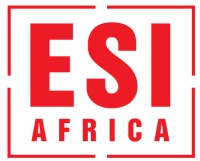4 Trends slow global progress as energy efficiency rises – IEA
The IEA says governments must both raise the ambition of existing energy efficiency policies and close persistent gaps
Four trends are slowing global progress on energy efficiency even as the world heads for a faster improvement rate in 2025, according to the International Energy Agency (IEA).
Power4less CEO Nafisa Fareed says their company started around the idea of changing the way South Africans engage with power. The company is sustainability focused on energy efficiency with a big emphasis on geyser design to reduce energy consumption
The agency’s latest annual update report Energy Efficiency 2025 shows global primary energy intensity – the key metric for tracking efficiency – is on course to improve by 1.8% this year, up from 1% in 2024.
Preliminary estimates indicate that major economies such as India and China are showing stronger progress compared with their post-2019 averages.
Acceleration in energy efficiency
The uptick comes after several years of lacklustre performance, with global gains averaging around 1.3% per year since 2019, well below the previous decade’s annual average of 2%.
“The acceleration in global progress on energy efficiency that we’re seeing in 2025 is encouraging,” said IEA Executive Director Fatih Birol.
“But our analysis shows that governments need to work even harder to ensure efficiency’s full range of benefits are enjoyed by as many people as possible.”
The world remains far off the COP28 goal of doubling the global annual rate of energy efficiency improvement to 4% by 2030. The new IEA report identifies where governments are strengthening action while analysing the patterns that continue to constrain faster progress.
Four key trends holding back faster progress
- Around two-thirds of global final energy demand growth since 2019 has been concentrated in industry, a sector where energy intensity progress has slowed sharply. Industrial energy demand growth has accelerated since 2019, while the average annual rate of industrial energy intensity improvement fell to under 0.5% over that same period, compared to almost 2% last decade. This global shift towards more intensive energy use in industry is offsetting gains made in other sectors and is weighing down overall efficiency progress.
- Policies have lagged technology progress, leaving significant savings on the table. Many appliances being sold today are often only half as efficient as the best available models. As technologies have become more efficient in recent years, energy efficiency standards have not progressed at the same pace. For example, the efficiency of best-in-class lightbulbs doubled in the last 15 years, while minimum performance standards have only gone up by 30%.
- Increased access to air conditioners has pushed up cooling-related electricity demand. Higher living standards have allowed more people to afford much-needed cooling technologies such as air conditioners, especially in emerging economies. In fact, energy for space cooling has seen the fastest growth of any end-use in buildings since 2000, growing over 4% per year. However, this increased demand has been met with equipment that is not highly efficient, further straining energy systems at a time of rapid growth. If every air conditioner bought since 2019 had been the most efficient available, the world could have avoided electricity demand growth equivalent to the demand growth from data centres over the same period.
- Electricity demand growth has outpaced renewable supply leading to an overall increase in less efficient fossil fuel generation. Electricity demand has grown two to three times faster than overall energy demand since 2019. In some regions, this rising demand has led to greater use of inefficient generation sources, placing upward pressure on primary energy demand and slowing energy intensity progress.
Investment in energy efficiency set to rise
Global energy efficiency-related investment is set to reach almost $800 billion in 2025, rising 6% from last year and more than 70% above 2015 levels. But higher material costs and declining public support in some countries are constraining progress.
Two-thirds of end-use investment is concentrated in China, the US and the EU, though the fastest growth over the past decade occurred in India and Southeast Asia.
Nearly 18 million people were employed in energy efficiency in 2024, but labour shortages remain persistent across many regions.
Impact of energy efficiency practices
New analysis shows how efficiency gains since 2010 have kept emissions 20% lower than they otherwise would have been, reduced household energy bills by up to 20% in advanced economies, and helped industry produce 20% more value per unit of energy consumed. Efficiency measures also avoided the need for 20% more fossil fuel imports in IEA countries.
In 2025, countries implemented more than 250 new or updated efficiency-related policies, representing over 85% of global energy demand. More than 50 nations have also set updated efficiency targets in their Nationally Determined Contributions ahead of COP30.
The IEA says governments must both raise the ambition of existing policies and close persistent gaps. Many standards have not kept pace with technologies now widely available, while half of countries still lack efficiency requirements for new buildings.
Mandatory performance standards for industrial motors are missing in two-thirds of countries. Identifying and closing these gaps, the agency says, will be essential to accelerating progress this decade.
Cover photo: saiarlawka©123rf


